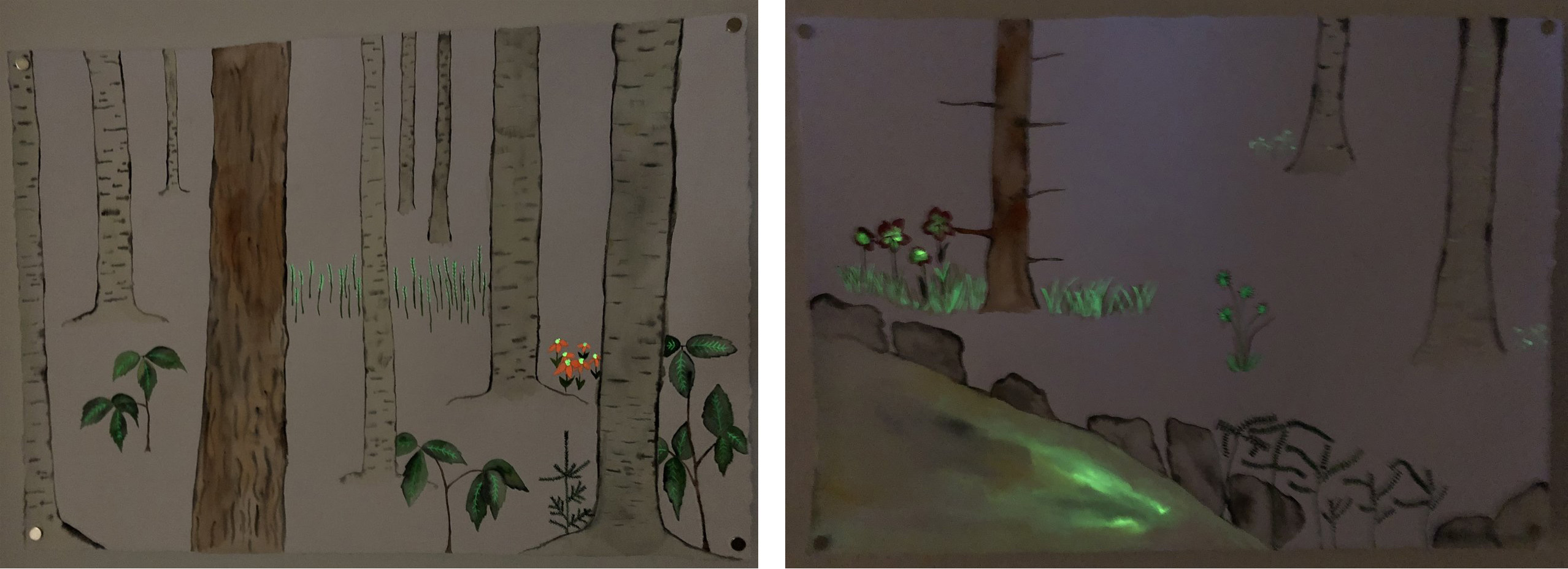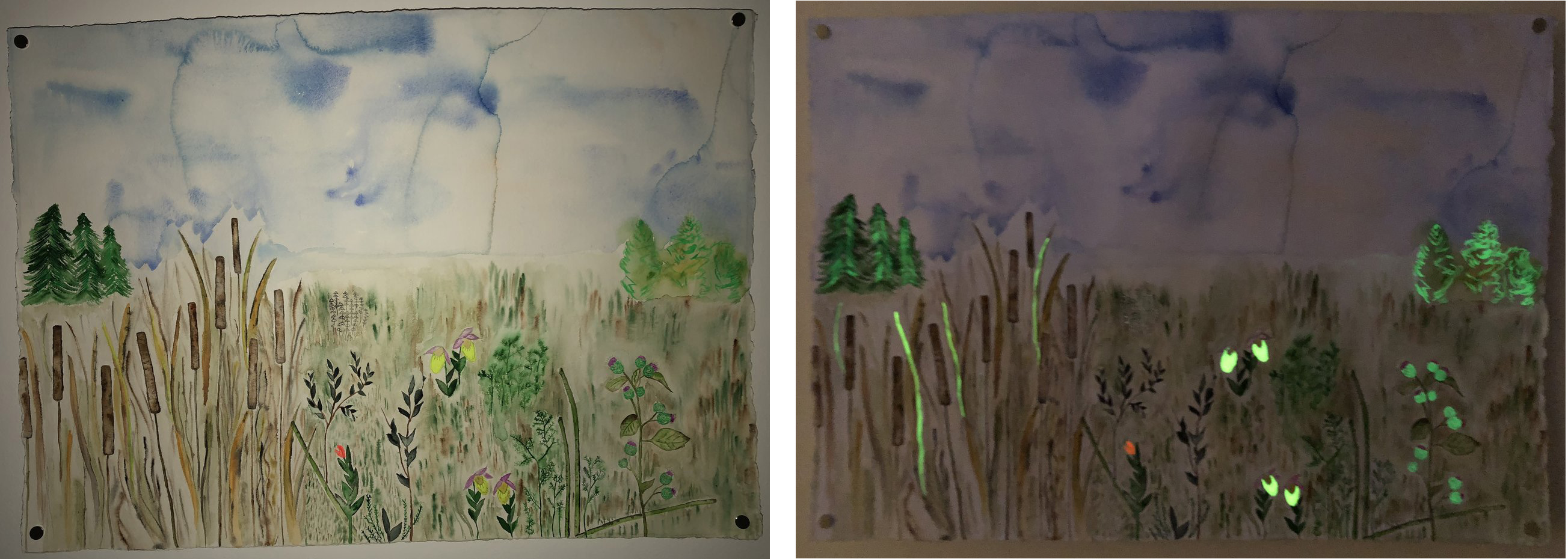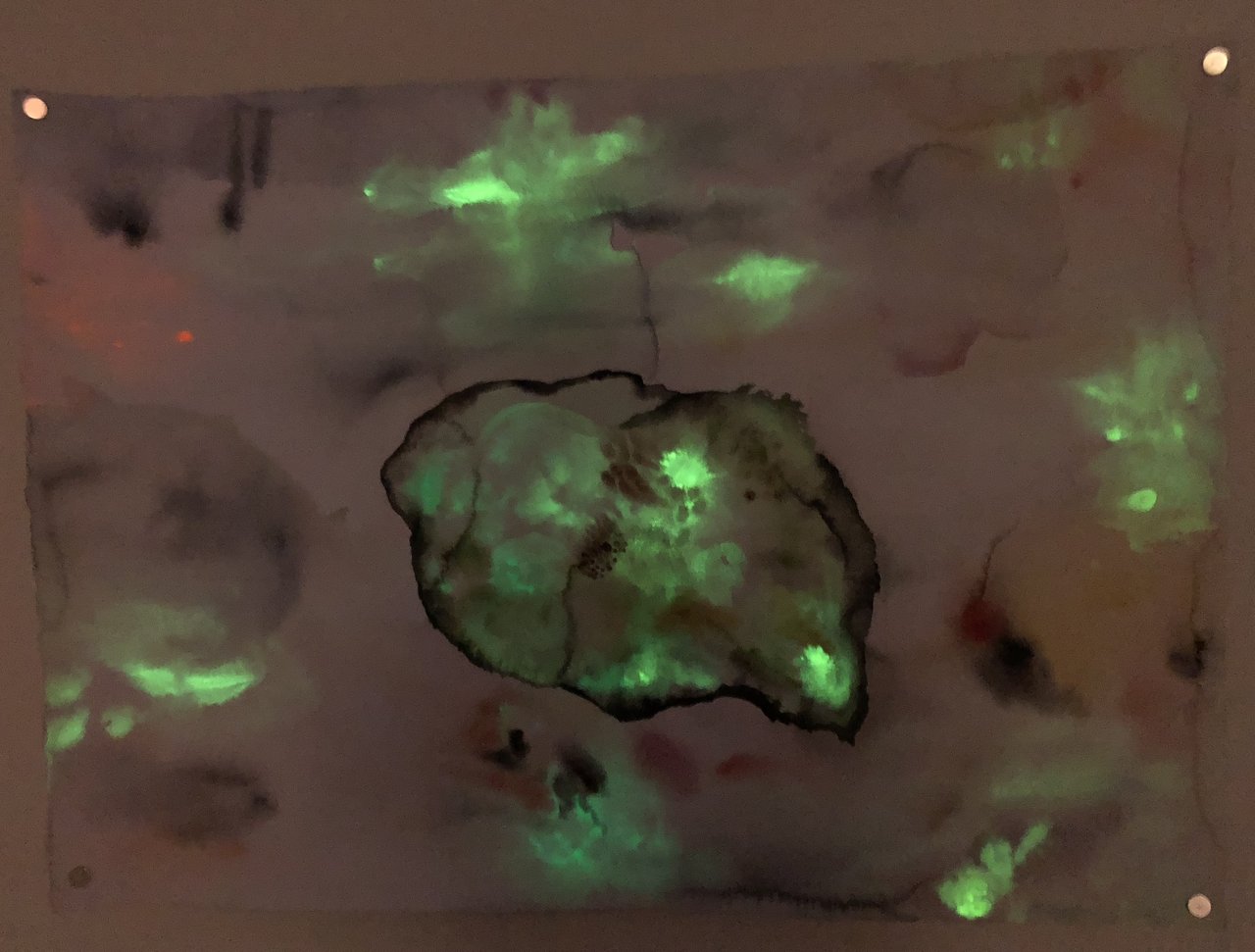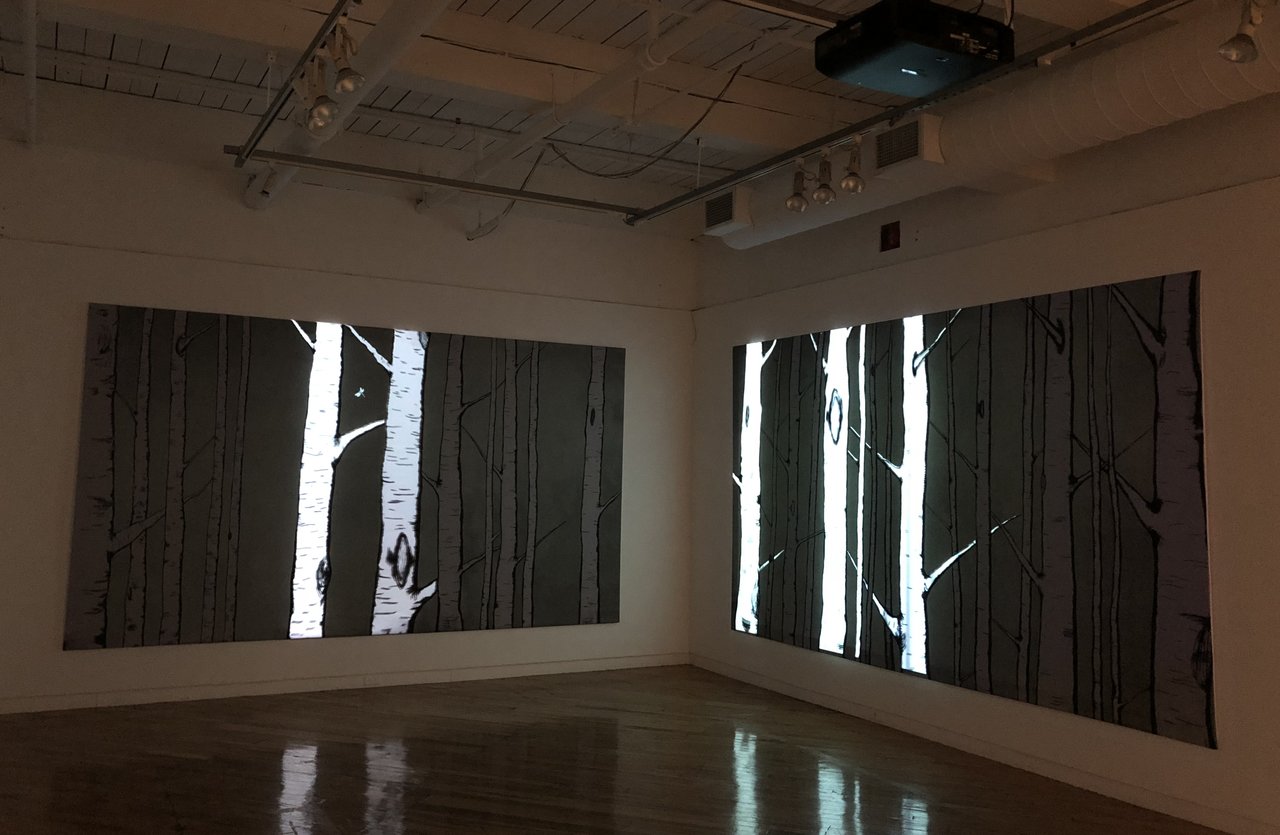The Future is in the Land – a significant exhibition by Julie Nagam – was recently displayed at A Space Gallery. Nagam, a history of art professor at Winnipeg University, is a leading figure in the North American Indigenous Arts Studies, as she has devoted her life to explore and promote Indigenous culture. Her practice is inspired by her observation and interaction with the land of her people. She aims to find the possibilities of establishing a balance between a healthy environment and social development. The Future is in the Land is curated around this dilemma.
The exhibition contains paintings and a multimedia installation. The two sections are interconnected, so the works can communicate with each other. Nagam takes us to a forest, using the perspective of a person walking in them, showing everything at eye level. We see only the trunks of the trees, then, looking down, the undergrowth with beautiful flowers among small rocks. Another water color shows a meadow where reeds and wild wheat grows, so a lake or river must be nearby, under a huge sky. Some parts of the compositions are purposely touched up with fluorescence paints. There is very little, almost no light in the room and the details, that the artist intended to emphasize, has fluorescence paint on, glittering in the dark. The fragments highlighted in this way are petty things, such as small flowers, grasses and leaves and the visual effect is best when the work is observed from a distance.
The same composition looking at from closer (left) and from a distance (right)
Many of these landscapes appear in a mystical semi-darkness, where little creatures move and the light has its own power – making the viewer feel like walking into a folk tale. Nagam believes, that “there is a particular ability to view the landscape allowing one to ‘see’ the layers of knowledge buried in the land and to hear the environment, which sings the song of the transformation of time, space and memory.”
The multimedia installation combines paintings and projection. Tree brunches and trunks are projected on two large walls with assembled rays from top to bottom or in an inversed manner. The projection is enriched with the sound effect of birds twittering, further deepening the illusion of being in the woods. This realm is also inhabited by forest creatures that appear periodically within the projection, as well as in the room accentuated by the fluorescent paint. The highlights on the trees are dramatic, the forest becomes immersive. It has a strong effect on the audiences, as it alerts and urges them to face and solve the problems addressed in this exhibition.
The show exploits the elements and the atmosphere of the forest in a sophisticated way. It sends a clear message about the environmental issues we have to face and our anxiety connected to them. Nagam approaches her theme by combining traditional watercolor with the use of chemicals in the fluorescent paint, electronic projection and multimedia installation; mixing old and new. In her artistic practice she does the same by turning our attention to the old ways of living on a land, from a land, without destroying it with polluting chemicals; trying to teach us to love and respect it in the present. She concludes, “Our survival and our continuation as a people are tied to Indigenous knowledge of the land and a return or an extension of these land-based practices is what will bring us into the future.”
Text and photo: Xiaotong Cao
*Exhibition information: March 15 – April 20, 2018, A Space Gallery, 401 Richmond Street West, #110, Toronto. Gallery hours: Tue – Fri, 11 am – 5 pm, Sat, 12 – 5 pm.




